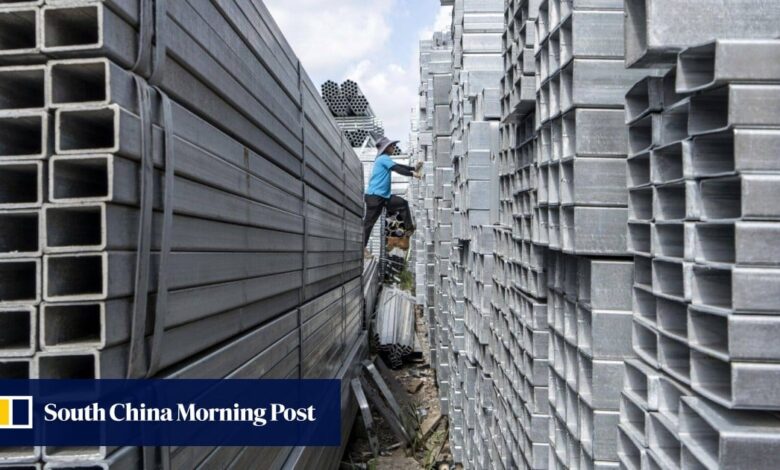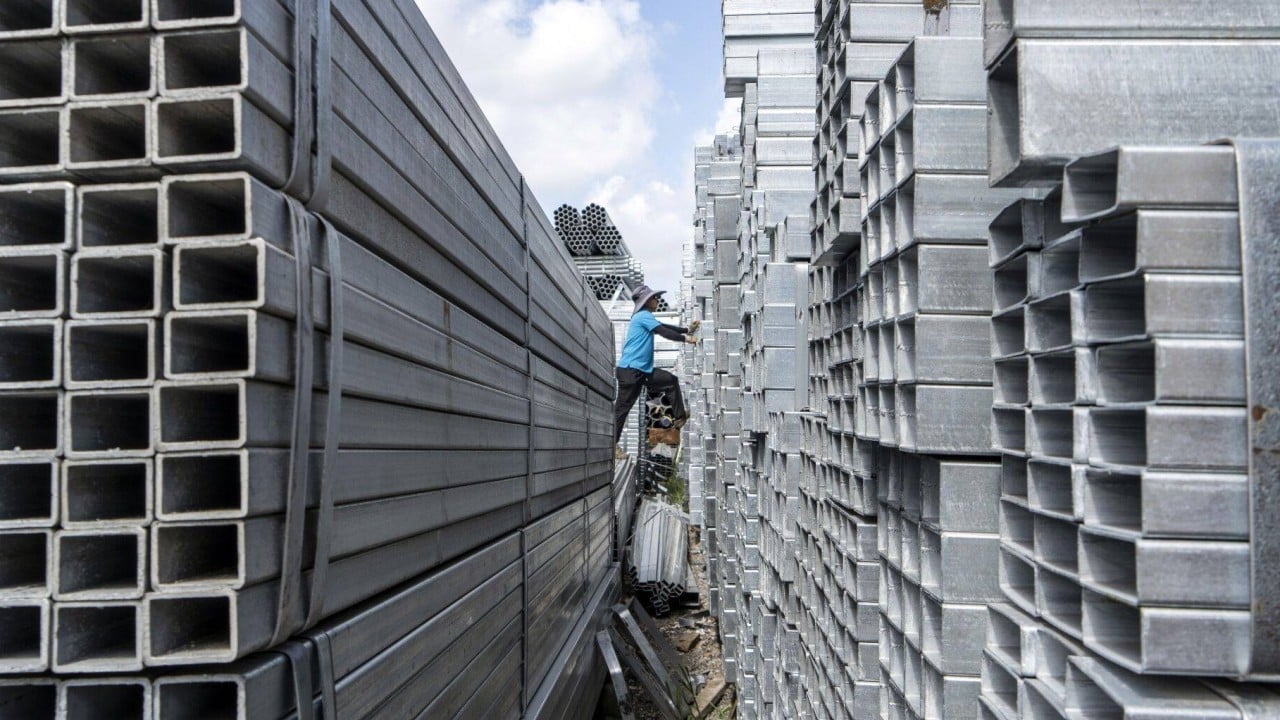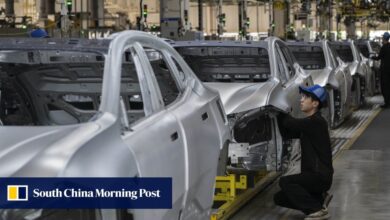China’s steelmakers face ‘cruel’ reality as ‘harsh’ winter comes for embattled industry


But on Friday, the Ministry of Industry and Information Technology (MIIT) halted the system as it sought to consult relevant parties to revise the programme.
There had been problems in policy implementation, supervision, as well as “incompatibility with the development situation and demand of the industry”, the MIIT notice said.
“At present, the supply and demand relationship of the steel industry is facing new challenges,” the notice added.
“Green and low-carbon, structural adjustment, layout optimisation, mergers and reorganisations have put forward new requirements for the capacity replacement policy.”
We think [the notice] will help eliminate sub-par capacity and help improve the supply and demand dynamics
Failure to comply with the notice would be regarded as “illegal increase of steel production”, the ministry said.
The notice came amid growing financial pressures facing the steel industry that has already seen a number of bankruptcies in recent weeks.
“We think [the notice] will help eliminate sub-par capacity and help improve the supply and demand dynamics of the Chinese steel industry,” said Weimin Zhang, associate director for Asia-Pacific corporates at Fitch Ratings.
But according to Mysteel analyst Vivian Yang, some steelmakers have continued to expand capacity, disguising it through the replacement programme, with the trading of capacity quotas also hindering the exit of “zombie” companies.
In the first seven months of the year, China’s steel output was 613.72 million tonnes, down by 2.2 per cent from the same period in 2023, the National Bureau of Statistics said last week.
Most integrated steel mills in China have suspended production or maintenance upgrades because of a loss of sales, said Mysteel analyst Alyssa Ren.
“Such scenario is likely to extend into next month, despite some participants’ expectation for a recovery in steel demand over September-October, as new economic data indicate a slowed growth in the country’s manufacturing and infrastructure sectors in addition to the sluggish property sector,” Ren added.
The National Enterprise Bankruptcy Information Disclosure platform showed a series of bankruptcies filed by Chinese steelmakers in recent weeks, including the Shaanxi-based Dongling Group, Fujian-based Haihe Steel and Tangshan Fengrun Yanfeng Iron and Steel in Hebei province.
Tomas Gutierrez, head of data at consultancy firm Kallanish Commodities, estimated steel demand would likely fall by around 10 per cent this year.
“The steel sector is peaking because the Chinese economy is undergoing a significant change,” said Gutierrez.
“We do see this as a longer-term trend becoming gradually more visible. Steel demand from construction and infrastructure should decline, while demand from other sectors could still see some growth. Overall demand, however, will decline over the long term.”
Senior executives from some of China’s biggest steel companies have warned that the worst is yet to come and that participants must come to terms with the decline.
Zhang Rui, general manager of the privately-owned Jianbang Group in the northern Shanxi province, expected more than 30 per cent of China’s steelmakers would be eliminated in the latest round of consolidation.
“This is a cruel reality and we must face it with courage and positivity,” Zhang said last week, according to a post on Jianbang’s WeChat social media account.
Zhang Hongjun, general manager of the state-owned Anshan Iron and Steel, warned employees at the company’s midyear meeting last week that the industry was in a worse situation than major traumas in 2008 and 2015, according to a post by the Liaoning-based company on its WeChat account.
The current contraction in the steel industry will accelerate the process of increasing market concentration
Zhang’s views were echoed by Baowu Steel Group chairman Hu Wangming, who described the conditions in the sector as being like a “harsh winter” in a post published on the company’s WeChat account on August 9.
China’s steel industry suffered slumps during the global financial crisis between 2008-09, and again in 2015-16, with subsequent stimulus and supply-side reforms eventually supporting the sector.
According to China’s 14th five-year plan, by 2025, more than 40 per cent of steel production would be concentrated in the top five companies, and more than 60 per cent would be concentrated in the top 10.
Crude steel output from the top 10 key steel enterprises in 2023 accounted for 51.16 per cent, slightly lower than the 51.82 per cent achieved in 2022, according to a report by the state-owned CS Steel News, citing data from China Metallurgical Industry Planning and Research Institute, in February.
“So the consolidation in the Chinese steel sector has been going on for years by now. And the current contraction in the steel industry will accelerate the process of increasing market concentration,” Mysteel’s Yang added.
And China’s steel sector consolidation would see more producers focusing on delivering higher value-added products for manufacturing, including electric cars, new energy products and ships, said Alan Jiang, associate director for Asia-Pacific corporates at Fitch Rating.
Large-scale steelmakers with a strong product mix would benefit from the changes, Jiang added.
Source link



